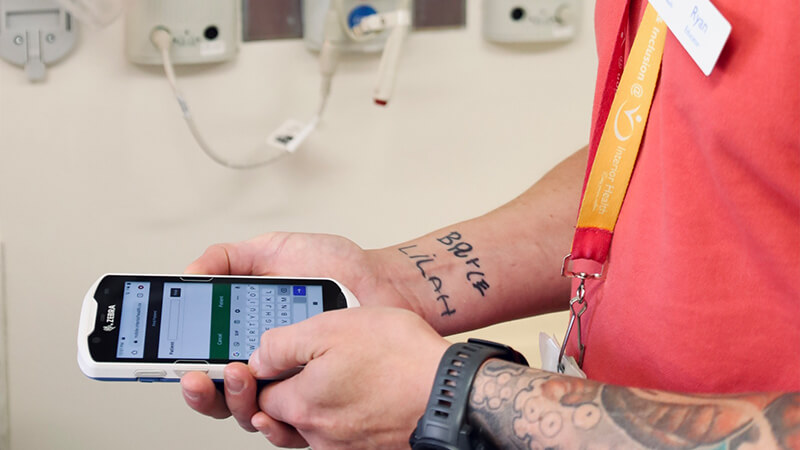WOWs, or workstations on wheels, are often bulky, hard to maneuver, and disruptive to sleeping patients. What’s more, patients may not feel “seen” when their clinicians are facing a computer screen.
To overcome these challenges, South Okanagan General Hospital embraced the opportunity to implement Expanse Point of Care. Bringing a mobile, modern experience to both nurses and patients was the driving force behind this longtime MEDITECH customer’s decision.
“We could see POC’s potential and the benefits of having a pocket-sized device staff can easily take into a patient's room without disruption,” said Teresa Fortune, the clinical operations manager at SOGH. “It would also untether our clinicians from their WOWs and enable them to spend more time engaging with patients at the bedside.”
Putting devices to the test
Nurses who were selected to participate in the POC pilot at SOGH were eager to try handheld devices that promised to help them spend less time on WOWs, while giving them convenient, bedside access to MEDITECH’s EHR.
SOGH’s digital health team, which included a clinical practice educator, quickly implemented the POC solution and trained staff on the handheld devices. Since the new hardware is similar to a smartphone, it didn't take long for the nurses to orient themselves.
Using POC handheld devices at the bedside, nurses on the inpatient unit:
- Stay organized with up-to-date worklists.
- Record vital signs and document other critical information at the bedside, in real time.
- Administer medications to resting patients with minimal disruption.
- Access lab results for informed decision-making.
The digital health team expected the POC solution to lead to time savings because nurses perform these activities multiple times during a shift.
Qualifying the results
Feedback from the pilot survey focused on how the POC solution impacted nurses and their workflow. Participants said the efficiencies gained from using the smaller device enabled them to have more quality time with patients. They felt the solution helped them to administer safer, more efficient care at the bedside because everything they needed was at their fingertips. Night shift nurses stated they were able to deliver quicker, less disruptive care with a handheld device than a cumbersome WOW.
Since testing new technology also affects patients, SOGH prioritizes patients’ feedback in its pilot evaluations. POC devices were far less intrusive, patients said; they appreciated that staff could walk in the room without a bulky WOW, and felt nurses were more engaged because they didn’t have a big computer in front of them.
“The advantages of time savings and user satisfaction are soft metrics that are hard to quantify but really matter because healthcare is about people,” said Fortune.
Optimizing digital technology
Since the pilot, SOGH has also been using the POC solution in its small but busy emergency department. Adding handheld devices as an option enables nurses to maneuver through tight spaces as they care for their patients.
“I’m glad the POC devices enhance the nurses' workflow and improve patient care and satisfaction,” said Fortune. “It’s difficult to find WOWs that are truly user friendly and offer a smaller footprint. Even the new ones didn’t fit through some of our doorways.”
The positive reaction from staff and patients has allowed SOGH to set the standard for other Interior Health Authority hospitals. According to IHA Executive Director of Clinical Informatics Grace Bole-Campbell, POC aligns with the organization’s strategy to optimize digital technology.
“We’re always looking to get the most up-to-date technology and devices, and POC is a great example of this,” she said. “It enhances the patient experience and provides nurses with modern technology that amplifies their practice.”

